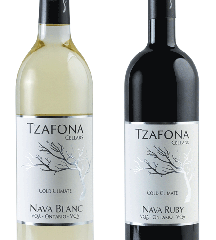Local News
Adas Yeshurun Herzlia Synagogue hosts moving farewell for departing rabbi Yossi Benarroch
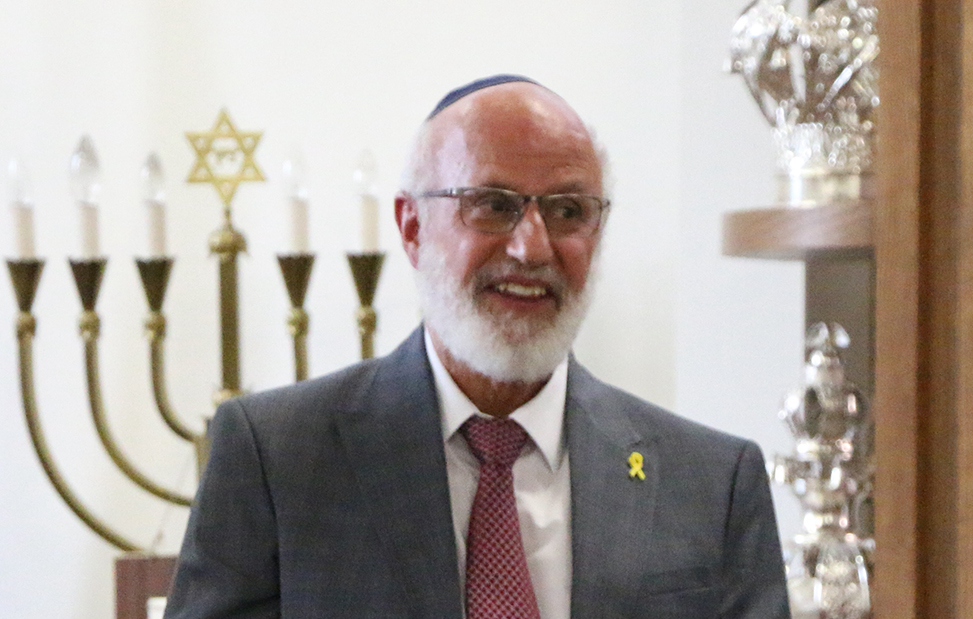
By MYRON LOVE It was a bittersweet evening Sunday, July 27, as about 300 members of Adas Yeshurun Herzlia and other community members gathered at the synagogue to express their appreciation to retiring Rabbi Yossi Benarroch for his service to the congregation – and the larger Jewish community – over the past nine years.
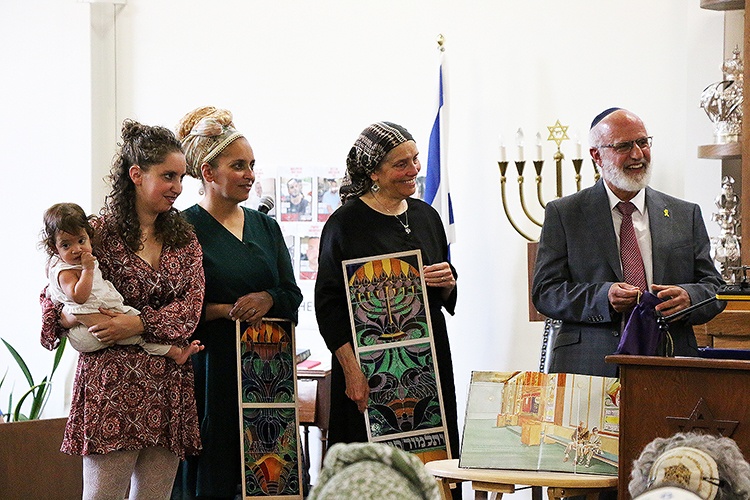
Although Benarroch had officially retired at the end of July, he had already returned to his family in Israel. The congregation paid to fly him, his wife, Elana, their daughters Ruchama and Tiferet and Tiferet’s infant daughter, Agam, back to Winnipeg for the moving tribute evening.
As this writer noted in an interview with Yossi Benarroch earlier this year, his assuming the spiritual leadership of Adas Yeshurun Herzlia was a match made in heaven. He grew up in our community, one of four sons of the revered Solomon and Mary Bennarroch. The future rabbi earned a physical education degree from the University of Manitoba in 1984, following which he made aliyah. He studied at the Mercaz Harav Yeshiva (among others), receiving smicha in 1991. In 1999, he and his wife, Elana, and their children moved to Vancouver.
He and his family were back living in Israel in 2016 when the Adas Yeshurun Herzlia pulpit became vacant. “I saw it as an opportunity to fulfil what I felt was my obligation to give back to the community which had given me so much in my early years,” he says.
A second motivation was that he would be able to spend more time with his aged parents and two brothers in Winnipeg.
In his remarks on the 27th, Rabbi Benarroch thanked many people in our community who had played an important role in his life. First and foremost, he thanked his wife, Elana. While she didn’t want to leave Israel, he noted, she understood how important this was to him.
The arrangement that they agreed upon was that he would spend blocks of nine weeks in Winnipeg followed by three in Israel. He always made sure to be home (Israel) for Pesach, Sukkot and half of Chanukah. Now, nearing 68 years old, and with his parents both having passed away, Yossi Benaroch feels that it is time to go back permanently.
“I really appreciate the sacrifice that Elana was willing to make – giving up the love of her life for nine months a year for nine years so that I could fulfill my lifelong dream to return to and give back to the community I love so dearly.”
It was also very important to him, Rabbi Benarroch added, that some of his children were able to meet his community in Winnipeg and see what this community meant to him.
Among the many individuals he thanked were the late Dr. Earl Hershfield who – as president of the congregation – persuaded him to come back here; current president Jack Craven; long time congregational leaders Abe and Barbara Anhang; and members of the congregation as a whole – who welcomed him into their homes and lives.
“I have felt a tremendous love here,” Rabbi Benarroch said. “I can honestly say that in nine years, I never had a single argument with anyone in the congregation.”
He noted how much he cherished being able to spend time with his family in Winnipeg – his late parents, his brothers, Michael and Albert, his nephews and nieces and cousins.
Rabbi Benarroch also spoke about his positive relationships – friendships – with his rabbinical colleagues and the leadership at the Federation.
While Rabbi Benarroch noted that he is happy that he is going to be home full time now with his family – including three other children and numerous grandchildren – in Efrat, he added that he is not finished here quite yet. He announced that he will be back one more time to lead yom tov services.
The tribute for Rabbi Yossi Benarroch and his family on July 27 was not the only reason for celebration. The evening also marked the rededication of three of the six Talmud Torah Beth Jacob Synagogue stained glass windows.
Five of the windows were installed at the Talmud Torah Beth Jacob Synagogue – which was then located on Matheson Avenue in the North End (where it shared space with what was then the Talmud Torah School) – in May of 1970. Three of the windows were in commemoration of the late Rabbi Avraham Kravetz, Cantor Benjamin Brownstone and philanthropist Joseph Wolinsky – all of whom played an outsized role in shaping Jewish education in our community. According to an article I wrote for the Jewish Post at the time, the windows were created by Ron Henig, a Toronto-based artist. Marcus Bressler, a Talmud Torah past president, had seen Henig’s work in Toronto and persuaded the Simkin and Chait families to memorialize their loved ones by funding the installation of two windows in the Matheson Avenue shul. So eye-catching were the windows, some other members of the shul decided to have three more windows created in memory of Rabbi Kravitz, Cantor Brownstone and Wolinsky.
The windows moved with the Talmud Torah Beth Jacob Synagogue in 1997 to its new location on north Main Street after the community sold the Talmud Torah/Joseph Wolinsky Collegiate building and centralized Jewish private education in our community at the new Asper Campus.
Winnipeg artist Irma Penn created a sixth stained glass window for the Talmud Torah about 20 years ago at the new location.
Two years ago, facing declining attendance over several years, the Talmud Torah congregation merged with the 53-year-old Chavurat Tefila congregation – which was also dealing with declining attendance – at the latter synagogue on the Corner of Hartford and McGregor.
After the Talmud Torah building was sold last summer, three of the windows – the Irma Penn window and those that were dedicated to Joseph Wolinsky and the Chait Family followed the congregation members to the new Chavurat Tefila – Talmud Torah shul.
The Rabbi Kravetz, Brownstone and Jean Simkin windows were passed on to the Adas Yeshurun Herzlia congregation, where the Rabbl Kravetz “Shoah” window was rededicated in memory of the late Leon and Faye Raber by their children, Frayda and Label Raber.
In rededicating the “Shoah” window n memory of their parents, Frayda Raber pointed out that the window incorporates the Gorenstein (Faye’s) family’s relationship with the Adas Yeshurun shul from its beginnings in 1909 and their father’s survival of the Holocaust.
“Label and I grew up at the Adas Yeshurun Herzlia,” recalled Raber. “We went to elementary school here, attended junior congregation here, Shabbat and Yom Tov services, and celebrated our life cycle events. Despite living away, Label in Vancouver and me in Ottawa, the synagogue has remained our home away from home all these years.”
She added that her mother maintained her membership even after moving away in 2017 after Leon’s passing, and remembered the synagogue in her will.
Faye Raber passed away last September at the age of 103.
Frayda thanked Rabbi Benarroch for bringing the opportunity to refurbish the Shoah window to the family’s attention. “I believe that having this stained glass window displayed so prominently will help keep this part of our history in the forefront for current and future generations,” she said.
Abe and Barbara Anhang rededicated the two other windows – the Or V’Talmud Torah and Shir U’Shvacha windows – in honour of the Benarroch Family. As Barbara Anhang noted in her remarks:
“It was Shammai in the first chapter of Pirkei Avot who pointed out the necessity of daily Torah study, of saying little and doing much, and of receiving everyone with a pleasant countenance. These traits were second nature to Mary and Solomon Benarroch, who, when learning of Winnipeg’s search for a community shochet (slaughterer), jumped at the chance to leave Morocco and came to Winnipeg.”
Shlomo Benarroch, she noted, served as one of Winnipeg Jewish community’s shochetim for over 50 years. He was also a Torah reader, sofer (scribe), mohel (as needed), chazan and educator.
“He was a soft-spoken gentleman who said little but did much,” Barbara said, “and cared deeply about serving his adopted community.”
She described Mary Benarroch as “the consummate Jewish homemaker who provided a loving, supportive home for her husband, twins Yossi and Yamin, Michael, Albert, and their extended Canadian family. Her sons were her treasures.
”She succeeded in nurturing them to grow into observant, caring people who excelled in education and community service.”
Barbara went on to thank “Rabbi Yossi for his inspiring Talmud and parsha classes, his kashrut supervision at Schmoozer’s and Gwen Secter kitchens, Gunn’s Bakery, and Sunday morning Maimonides classes, bar/bat mitzvah preparations and drashas.”
She further thanked Elana Benarroch for her love and devotion in caring for their family in Israel while he was here, that made it all possible.
“Elana, we are all eternally grateful,” Barbar said. “Thank you. Both of you have shown us by example the joy of performing a mitzvah and that Jewish life cannot be sustained without Israel at its core.
“We were blessed to have you as our role models. Every one who had the honour of getting to know you and your dear parents, and seeing how you and they chose to live your lives, was, and is, changed for the better.”
Sid Halpern added his praise for the Benarroch Family: “We are honoured to rededicate these windows in the name of the Benarroch Family,” he said.
“Several weeks ago,” Halpern continued, “in his usual inspiring droshe, Rabbi Yossi in Parsha Balak, taught us that G-d sends us messages in different means from different messengers. The stained glass windows we rededicate today represent passionate messengers – visionaries who built the community we enjoy today with messages if our ears and eyes and hearts are open and receptive. Among the most consequential of these messengers were Shhlomo and Mary Benarroch, who created a new world for themselves in our community just as their community in their native Morocco was being largely destroyed. Their sons, Yamin, Yossi, Michael, and Al, continue to revitalize and inspire communities in Israel, Canada and the world.”
Halpern reIated that, in a reply to a question from his late wife Esther to Mary Benarroch how Mary had achieved such overwhelming success in raising her family, Mary’s response was “with love” which, Halpern noted, is the strongest force on the face of the earth, according to none other than Albert Einstein.
Halpern also had kind words for Faye and Leon Raber – whom he remembered as supporters and builders of Herzlia. “While Leon always sat in the back benches,” he recounted, “he and Faye were always on the front benches when the shul needed their support.
“It is great to have their children, Label and Frayda, with us whom I remember as regular attendees in their younger years and who were always respectful to and caring for their parents.”
Addressing Elana Bennarroch, Halpern said: “While we knew and felt your pain of aloneness for the past nine years, Rabanit Elana – especially in such stressful times, we want you to know how grateful we are to you and your family for lending Reb Yossi to us.
“This is a a time not for farewell but, rather, for Lehitraut, Reb Yossi and Elana, till we meet again Thank you Reb Yossi for your beautiful messages. Keep them coming from Tziyon from whence the Torah will come.”
Speaking on behalf of the Benarroch Family, Kim Bailey, wife of University of Manitoba President Michael Bernarroch, talked about the family’s strong connection with the Talmud Torah Synagogue.
All four brothers had their bar mitzvahs at the synagogue, she noted, her fasther-in-law was the long time Torah reader, and her mother-in-law was a part of the shul’s Emunah women’s group..
“One of my favourite memories,” Bailey recalled, “was listening to my father-in-law read the Megillah every year at Purim.
“That synagogue was central to the whole Benarroch family and they were beloved pillars of the Talmud Torah community,” she added.
While Solomon and Mary moved with the Talmud Torah after the congregation was forced to relocate, Bailey noted, they did move eventually move south to be closer to their children and grandchildren.
“I can imagine the members of the Talmud Torah who are no longer with us would be pleased to see that these windows have found such a beautiful new home and that they are being dedicated to the Benarroch family,” she said. “These windows are a reminder that while many things have changed in our community, the essential things such as Torah, prayer, song, love and respect for family and community don’t.”.
Local News
Canadian produced kosher wine now available in Winnipeg
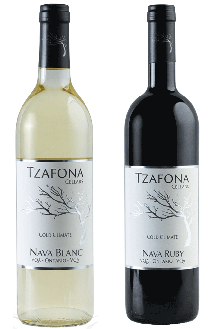
By BERNIE BELLAN With the imposition last February of a ban on the sale of American liquor in Manitoba, the only type of kosher wines that were available here were from Israel, specifically wines produced by the Galil winery.
Since the latter part of September, however, kosher wines produced by a Canadian winery are now available in Manitoba liquor marts, also the Kenaston Wine Market.
The wines – a red and a white, are produced by a winery known as Tzafona Cellars – located in the Niagara region of Ontario.
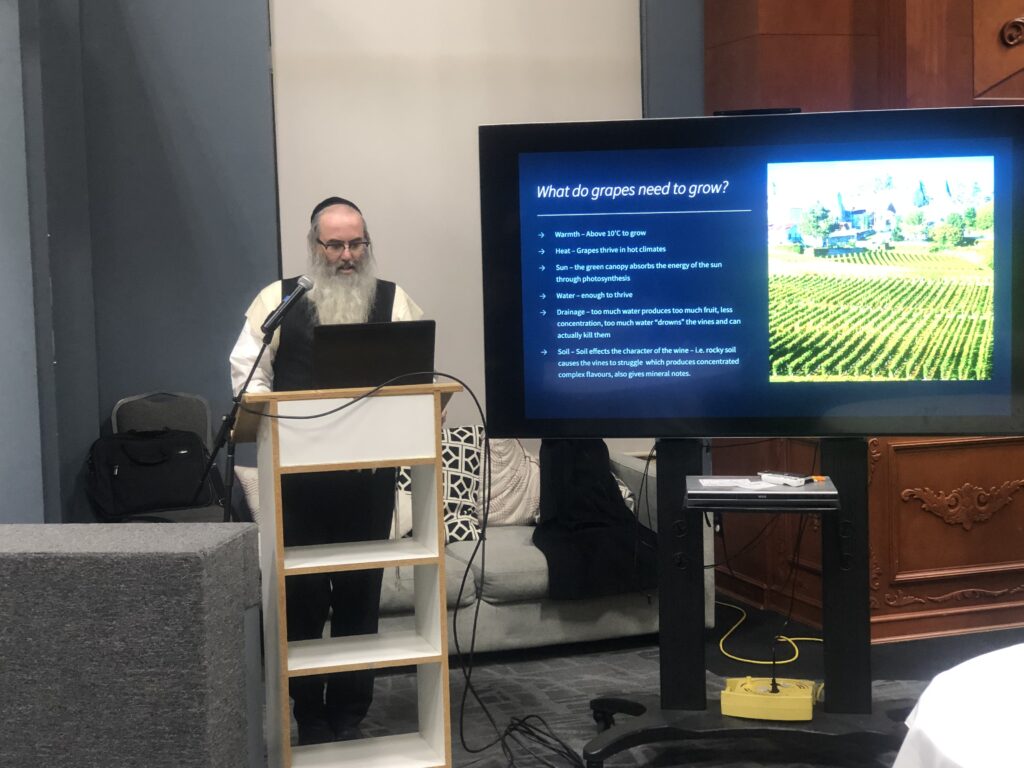
On Tuesday, December 2, Rabbi Avraham Gislason, who is a a rabbi in Thornhill, as well as a Tzafona Cellars winemaker, spoke to a large crowd at the Jewish Learning Centre, where he not only explained how kosher wine differs from non-kosher wine, he brought along bottles of five different wines produced by Tzafona Cellars for members of the audience to taste.
So – what makes a wine kosher? you might ask. According to the internet, “A wine is kosher if it is made according to Jewish dietary laws… with strict supervision and handling by Sabbath-observant Jews from the crushing of the grapes to the bottling of the finished product. The winemaking process must use only kosher-certified ingredients, such as yeast and fining agents, and rabbinically-approved equipment.
Rabbi Gislason himself started Tzafona Cellars in 2014. According to the Tzafona website, Rabbi Gislason saw that the “soil, air, and microclimate of the Niagara Peninsula all come together to create an up-and-coming world class wine region, yielding a unique experience that cannot be recreated anywhere else in the world.”
While he appreciated the quality of the wines being produced in the Niagara region, there was one problem: None of the wines were kosher.
According to the Tzafona website, “Starting with the 2014 vintage, Tzafona began to produce kosher wines using the same techniques and high-quality grapes used in producing other premium non-kosher wines. Since then, Tzafona has continued to produce a variety of different wines, namely Cabernet Sauvignon, Riesling, and Chardonnay. We have produced award-winning Icewines in the Vidal, Riesling, and Gewurtzraminer varietals. Tzafona is the only kosher Icewine producer in North America. Their Cabernet Franc Icewine won a Gold Medal at the All Canadian Wine Championships in 2025.
In 2016 we began to produce a line of refreshing semi-sweet wines under our brand “Nava Blanc” and “Nava Ruby.” (It is the Nava Blanc and Nava Ruby wines that are now available in Manitoba). Both of these wines are Tzafona’s bestsellers here in Canada and the USA.
The process of getting Tzafona wines approved in Manitoba was set in motion by Winnipeg marketing specialist Marsha Friedman, who for many years has worked as a marketing consultant and sales agent for businesses looking to offer premium kosher foods to their customers.
Her business, Excellence & Kosher, focuses on identifying unmet needs in the market. “I see a need and I try to fill it,” Marsha says.
“We also ensure that the most needed Kosher food products for the stores that carry Kosher are available, including Canadian Kosher wine,” she adds.
Marsha explains that she approached Tzafona—the only truly Canadian kosher wine company—some time ago with the idea of opening the Manitoba market for them and introducing their wines to local consumers.
Afterward, she contacted tManitoba Liquor and Lotteries (MBLL), which agreed to begin carrying two Tzafona wines: Nava Ruby (Red) and Nava Blanc (White).
Since that initial success in making Tzafona wines available for purchase in Manitoba, Marsha says that she and her daughter Shira have been making similar progress in Alberta and hope to expand into the British Columbia market as well.
For more information about Tzafona Wines, including the addresses of stores in Winnipeg and throughout Manitoba that carry their products, please visit the MBLL Liquor Marts website:
https://www.liquormarts.ca/liquormarts
Go to “Find a Product” and type “Tzafona.” Both wines will appear. Select the wine you’re interested in, then click “Store Inventory.” A list of all MBLL Liquor Marts that carry that product will be displayed.
Marsha adds that “We are hoping to have more listings of Tzafona wines available for Pesach this year, and we will be presenting them to MBLL for their approval.
“L’Chaim!”
Local News
Thanks to a Grant from the Asper Foundation the Gwen Secter Centre will Soon Begin Offering Free Kosher Shabbat Meals to Jewish Seniors
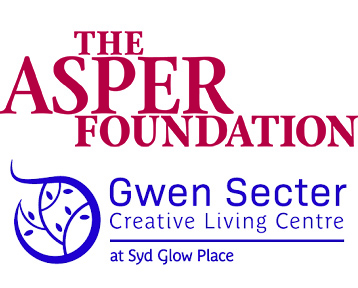
By BERNIE BELLAN In these increasingly difficult times – when so many families are finding it difficult to make ends meet, one group in society in particular is being hard hit by escalating food prices: seniors.
As food prices continue to rise, many seniors are struggling to afford many food items that they had always enjoyed previously. And, when it comes to Jewish seniors who might want to continue to remain kosher, the struggle is even more difficult – as the price of kosher meat and chicken has gone up even faster than the price of nonkosher meat and chicken.
Now, in an attempt to provide a modicum of comfort to some of those Jewish seniors, the Gwen Secter Centre, with support from the Asper Foundation, is about to begin providing kosher Shabbat meals for up to 50 Jewish seniors on a weekly basis.
Here is how Becky Chisick, executive director of the Gwen Secter Centre, describes what is going to be called the “Mitzvah Meal Program” will work: “We will be launching a new food security program supported by The Asper Foundation. Food security is a going concern is our community, especially with seniors living on a fixed income. The Mitzvah Meal program will ensure no one in the Jewish community is unable to celebrate Shabbat and other important Jewish holidays throughout the year. This program will transform the lives of so many seniors.
“Gwen Secter Creative Living Centre will be working closely with Jewish Child and Family Services to identify those who qualify for the program. There are many seniors that are not able to access Kosher Meals on Wheels (which is already a subsidized program thanks to the Jewish Federation), due to financial restrictions. The Mitzvah Meal Program, Supported by The Asper Foundation, has different criteria than the Kosher Meals on Wheels program.
“During the pandemic, we quickly realized how many seniors were not able to celebrate Shabbat due to lack of resources and finances. The Mitzvah Meal program will provide up to 50 individual low-income seniors with a healthy and fresh Shabbat (meat) meal, including chicken soup, challah bun, full entree of chicken, starch and vegetables, and dessert. In addition, they will receive special holiday foods and tools, so everyone is able to celebrate Shabbat and other Jewish holidays. For example: latkes and sufganiyot for Chanukkah, hamantaschen for Purim, etc. Those that are able to light candles at their residence will also get Shabbat and Chanukkah candles.”
Becky added, however, that “We still require close to $10,000 to ensure we can accommodate the max for a year and I plan to apply to The Jewish Foundation for the support.”
We contacted Anita Wortzman, president of the Asper Foundation, to ask her how the Asper Foundation became involved in this program. Anita responded: “The Asper Foundation is thrilled to support Gwen Secter Creative Living Centre and their new Mitzvah Meal Program. We believe that seniors in our community should be treated with the dignity, comfort and connection that Shabbat and the Jewish holidays bring. The long-term work of Gwen Secter Living Centre in delivering kosher meals on wheels, makes this a wonderful extension of that service to the Jewish community.”
As to how recipients of the “Mitzvah Meals” are chosen, we received this response from Alexis Wenzowski, Chief Operating Officer of JCFS: “Our priority will be ensuring that low-income seniors, those experiencing social isolation, and those facing mobility or transportation challenges are referred into the Gwen Secter program in a timely and effective manner.
“We have shared information about the Gwen Secter Food Security for Seniors Program across our Mental Health and Addictions, Settlement and Integration, and Older Adult Services teams. These program areas collectively serve some of the most marginalized and isolated seniors in our community, many of whom face complex barriers to accessing nutritious kosher food. We foresee there to be many referrals from these JCFS (programs into the Gwen Secter initiative. We are grateful and excited there will now be a formalized cooked meal Shabbat program for food insecure seniors.”
Alexis added this note about the number of individuals within our Jewish community who seek assistance from JCFS as a result of financial pressures: “JCFS is keenly aware that financial stressors and the cost-of-living crisis is impacting everyone. Food insecurity continues to be a significant and growing concern across our community, as it is in all communities. In the past year alone, our Asper Empowerment Program supported 179 unique households, with 7,542 kg of food security supports. An additional 122 households received employment and financial supports — including interest-free loans, grants, gift cards, and budgeting guidance — underscoring the breadth of need we are seeing. People are struggling.”
As noted, however, while Becky Chisick stated that the Asper Foundation funding will help to get the program going, the Jewish Foundation is being approached to provide additional funding in order to guarantee that the program can continue for at least one year. In the meantime though, if you would be interested in making a donation to help fund the program, Becky encourages you to make your contribution to the Gwen Secter Centre, stipulating that you want the money to go to the Mitzvah Meal Program.
One more note: While there are already some volunteer drivers in place once the program begins, more are still needed. To volunteer as a driver, contact Vanessa Ordiz at the Gwen Secter Centre: vanessa@gwensecter.com or phone 204-339-1701. Volunteers will be provided quarterly tax receipts for their service.
At the same time, by volunteering as a driver, it will allow for meaningful connections between clients and volunteers. For many clients this may be the only person they connect with that day.
Local News
Community leader Sheldon Zamick role model of perseverance despite life’s vicissitudes
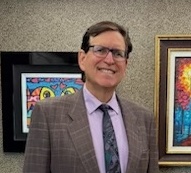
By MYRON LOVE For Sheldon Zamick, life is a marathon, not a sprint – and there is always more to learn. In a life marked by struggles, he has overcome adversity and written a story of success both in business and community leadership.
Over the years, he has given of his time and experience to a great variety of charitable organization – including the Jewish Federation, the CJA, the JNF, Canadian Associates of Ben-Gurion University of the Negev, the Canadian Magen David Adom, the Shaarey Zedek Synagogue (he is currently the Board’s finance chair), the Canadian Museum for Human Rights, Mount Carmel Clinic, the Variety Club, Muscular Dystrophy, Habitat for Humanity, Siloam Mission, and the Canadian Institute for the Blind. The most recent charitable organization that has benefited from his leadership has been the Lake Winnipeg Research Consortium.
He took on his most recent challenge as executive director of the Lake Winnipeg Research Consortium last year after stepping away from a 40-year career in real estate sales. “This is a really big responsibility,” he says of taking the helm of the LWRC.
As noted on the LWRC webpage, the organization was founded in 1998 “to facilitate scientific research on Lake Winnipeg following evidence of water quality deterioration related to the 1997 Red River ‘Flood of the Century’. The LWRC was incorporated in Manitoba in 2001 and received charitable status in 2008”.
“Our organization does vital research in regard to Lake Winnipeg,” Zamick points out. “Our 328-ton, 110-foot-long ship, the MV Namao – which celebrated its 50th birthday this past August (during which over 1200 supporters toured the boat) in Gimli – is out regularly in the spring, summer and fall on Lake Winnipeg taking water samples. We provide the research platform for scientists to conduct research with regard to climate change and the state of the lake and fish population. We offer science education year round, group tours and summer camp programs for kids.”
He adds that the consortium works closely with many stakeholders, including the Universities of Manitoba and Winnipeg, and receives funding from the Winnipeg Foundation, the Canada Water Agency, Manitoba Hydro, the Manitoba Government, the City of Winnipeg, the town of Gimli, other municipalities and many individual donors.
“It has been great getting the opportunity to meet with various government officials, research partners and donors,” he says.
Sheldon Zamick is a role model demonstrating that an individual growing up in humble surroundings and having to deal with adverse circumstances can succeed in life. He recalls how he had to go to work early in life – at the age of 12 – to help support his family. “We moved around a lot when I was growing up in the North End because my parents could never afford to buy their own home,” he recounts. “That is what drew me to a career in real estate.”
His first job, he says, was peeling potatoes in the basement at Kelekis (a long gone North End Winnipeg restaurant which those of us of a certain age still fondly remember). “I had to learn at an early age to be self-sufficient,” he notes.
In his university days, he worked part time as a corrrections officer – taking as many shifts he could get – at the Winnipeg Remand Centre.
He also demonstrated his leadership capacity at an early age. At 17, he served as president of the USY chapter at the former Rosh Pina Synagogue (even though his parents couldn’t afford to be members of the shul).
After graduating from the University of Manitoba with degrees in Economics and Psychology, he founded TV Facts Magazine, a free weekly TV and shopping guide which some readers may remember. “TV Facts was part of an international chain of publications,” he recounts. “I had to travel to New York to learn how to run a magazine. At our peak, we were putting out 50,000 copies a week – which were available in over 500 locations.”
It was in 1985 that Zamick pursued his interest in becoming a realtor – a profession in which he excelled. Over 40 years as a realtor, he received numerous sales awards, also recognition for his leadership role in his profession and his numerous contributions to the wider community. In the former field, he served for five years as a member of the Winnipeg Real Estate Board, including a term as treasurer and chairing the Government Relations committee.
In 2013-14, he was elected as a director of the 120,000-member Canadian Real Estate Association.
Zamick was recruited into volunteering in the Jewish community, he notes, in the mid-1980s by Laurie Goldberg and the late Larry Rosenberg, who were co-chairs of the Federation’s Young Adult Division. Sheldon subsequently served as co-chair –with Sid Halpern – of the 1987-88 Combined Jewish Appeal’s New Gifts Division.
“We were responsible for contacting members of the community who hadn’t given for a long time,” he explains. “We were really successful in persuading many of them to contribute to the campaign and (by extension) the community.”
That year, he and current outgoing Federation president Paula Parks were nominated to receive our community’s Young Leadership award. Zamick was presented with the Harry Silverberg Young Leader of Distinction Award by Nora Kaufman, the late Harry Silverberg’s daughter.
He later served as the CJA’s campaign director from 1989 to 1992. “During the 1989-90 campaign – that included Operation Exodus (aimed to help Jews leave the dying Soviet Union) – we raised an extra $2 million- bringing in a total of $6-million that year.”
In 1992, Zamick was afflicted with a condition that might have derailed a lesser individual. He was diagnosed with Retinitis Pigmentosa, a condition that left him legally blind. The ever resilient Zamick however took the diagnosis in stride. In 2022, he told an online publication called “Slideshare” that, after the diagnosis, he chose to be thankful for what he had rather than focus on what he had lost.
He added that while legally blind, he still has some sight in certain lighting. “It is a unique way to live,” he told Slideshare, “but you have to adapt to it and I haven’t let it stop me.”
He has been helped immensely by his longtime, supportive wife, Florence.
Typically, following his diagnosis, he threw himself into volunteering with the Canadian National Institute of the Blind. He served on the board of the CNIB for 16 years and was a leader in raising the funds one year – when the CNIB was facing government cutbacks.
Zamick is planning to retire from his current position at the end of this month. He says that he and Florence are looking forward to spending more time with family and friends, travelling –a pasttime they both enjoy, and getting together with their children – Natalie in Toronto and Steven and his wife Ally, along with granddaughters Isabella and Mikayla in Montreal.
He is however, still open to new possibilities. “You never know who might call next,” he observes.



